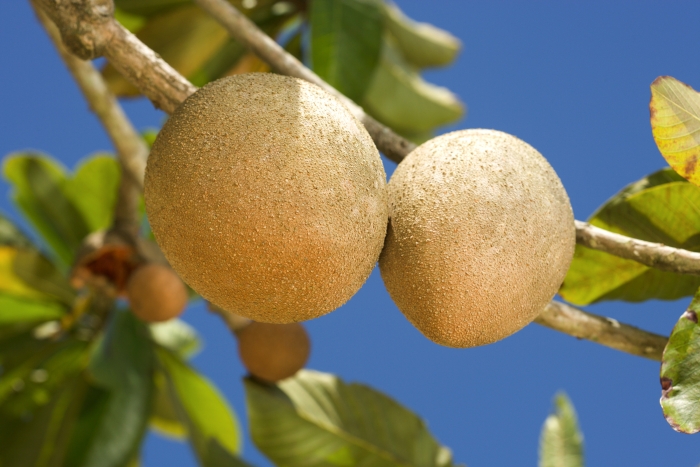Mamey Sapote
(Pouteria sapota)
Mamey Sapote (Pouteria sapota)
/
/

Public domain
Public domain



























Estimated Native Range
Summary
The Mamey Sapote is valued for its delicious fruit, which is high in vitamins and minerals, and for its ornamental qualities in tropical and subtropical landscapes. It is used in home gardens and commercial orchards for fruit production and as a shade tree. The tree requires full sun and medium water, thriving in well-drained soils with good fertility. While it is not drought-tolerant, established trees can withstand short dry periods. Grafting is the preferred method of propagation to ensure fruit quality and early bearing, as seed-grown trees are variable and take longer to fruit. The Mamey Sapote is relatively free of serious pests and diseases, but it can be susceptible to root rot in poorly drained soils. It is not considered invasive outside its native range.CC BY-SA 4.0
Plant Description
- Plant Type: Tree
- Height: 25-40 feet
- Width: 20-35 feet
- Growth Rate: Moderate
- Flower Color: N/A
- Flowering Season: Summer, Fall
- Leaf Retention: Evergreen
Growth Requirements
- Sun: Full Sun
- Water: Medium
- Drainage: Medium, Fast
Common Uses
Edible*Disclaimer: Easyscape's listed plant edibility is for informational use. Always verify the safety and proper identification of any plant before consumption., Low Maintenance
Natural Habitat
Native to lowland moist forests and dry forests of Central America and Mexico
Other Names
Common Names: Mammee Sapote, Marmalade-Plum, Marmalade-Tree, Große Sapote, Mamey, Mamey Colorado, Zapote, Zapote Mamey, Sapote, Mameysapote
Scientific Names: , Pouteria sapota, Calocarpum sapota, Calocarpum huastecanum, Calospermum mammosum var. ovoidea, Lucuma bonplandii, Calocarpum mammosum var. ovoideum, Achras mammosa, Bassia jussaei, Calocarpum mammosum subsp. bonplandii
GBIF Accepted Name: Pouteria sapota (Jacq.) H.E.Moore & Stearn